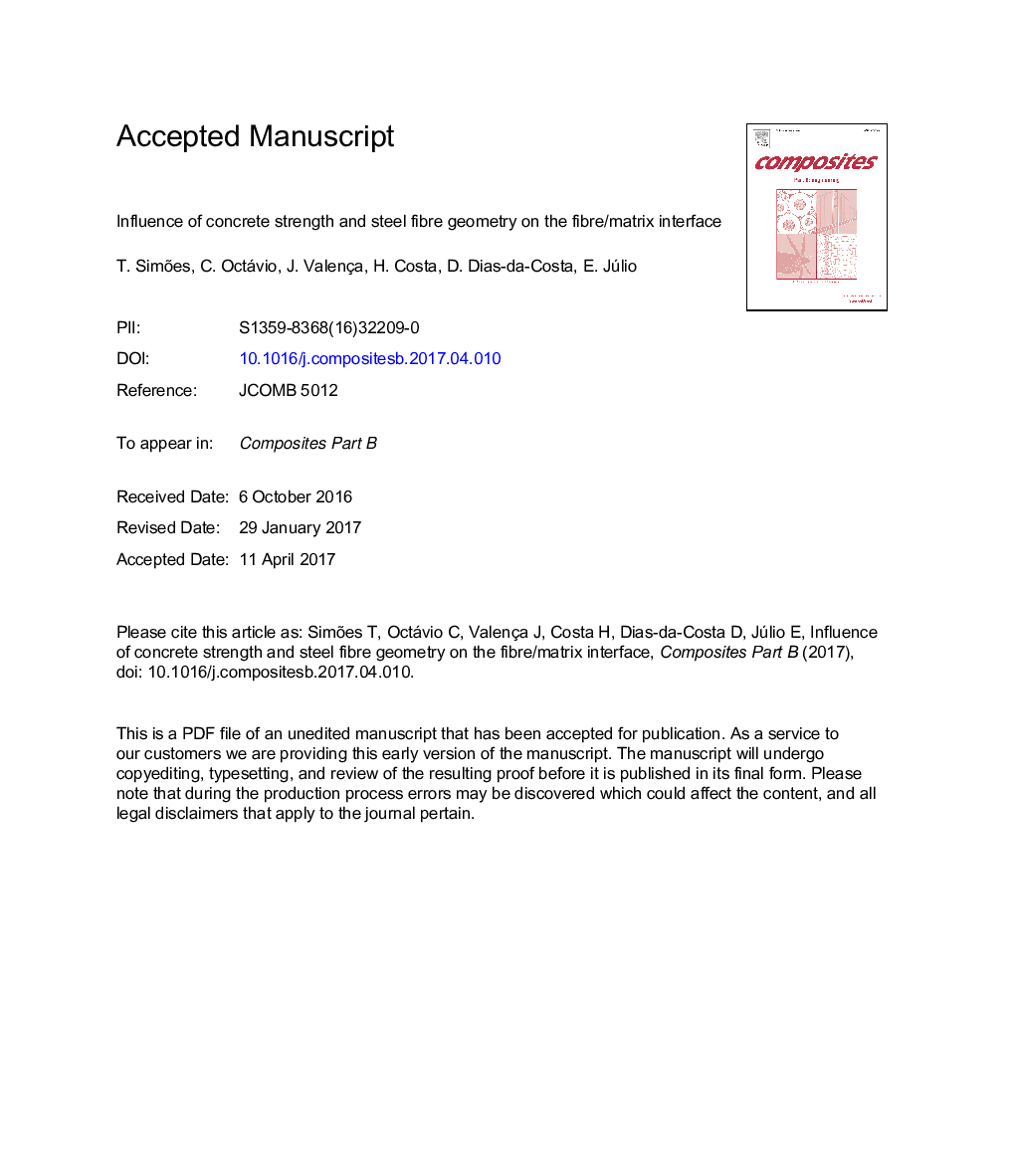| Article ID | Journal | Published Year | Pages | File Type |
|---|---|---|---|---|
| 5021219 | Composites Part B: Engineering | 2017 | 18 Pages |
Abstract
The main objective of the research described in this paper was to evaluate how the concrete compressive strength and the geometry of the steel fibres influence the behaviour of the fibre/matrix interface. With this aim, three different concrete matrices were designed with 20, 60 and 100Â MPa, and two types of steel fibres were adopted (Dramix® 3D and Dramix® 5D). Specific pull-out specimens were produced and three sets of axial tensile tests were defined with different fibres (3D fibres, and 3D and 5D fibres with trimmed ends). A numerical model was calibrated and used to expand the scope of results obtained from the experimental tests. It can be concluded that the concrete compressive strength strongly influences the fibre/matrix strength. In the set with untrimmed 3D fibres, higher strengths were reached due to the hook shaped endings, for all concrete strengths, varying between 64% and 72% of the total load. For fibres with straight endings, increasing both diameter and length lead to higher adhesion and friction strengths.
Related Topics
Physical Sciences and Engineering
Engineering
Engineering (General)
Authors
T. Simões, C. Octávio, J. Valença, H. Costa, D. Dias-da-Costa, E. Júlio,
